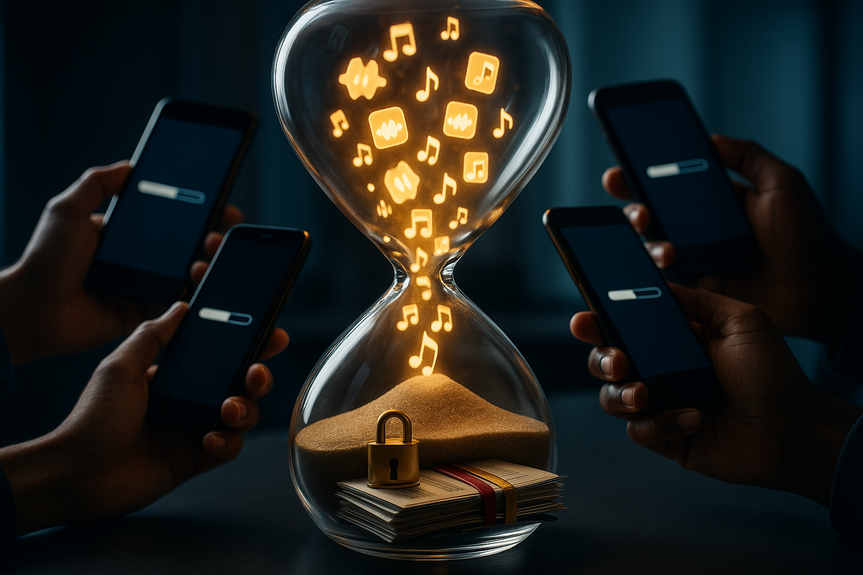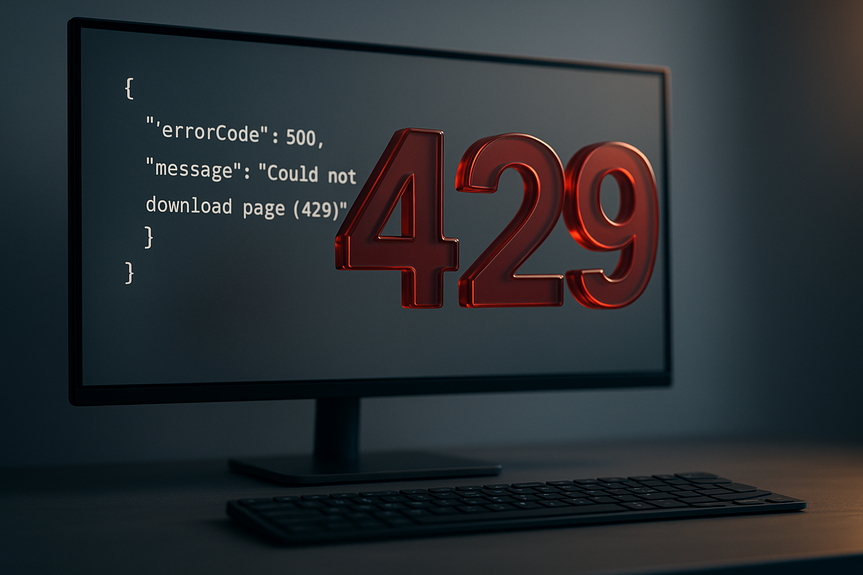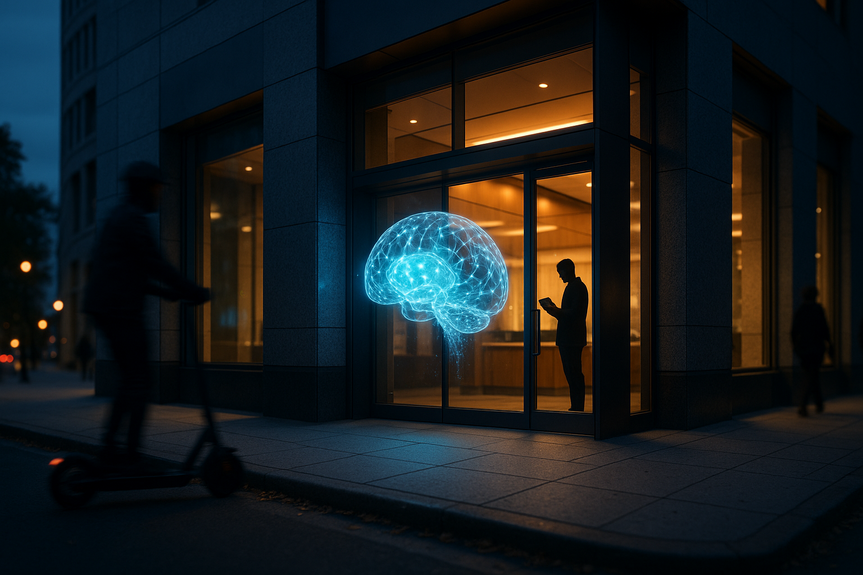Udio 48-hour download window lets creators save and safely export AI songs before the platform shifts.
Act fast: The Udio 48-hour download window gives users a short chance to save their past AI-generated songs before the platform shifts to a new licensing and streaming model. Starting Monday at 11 a.m. Eastern, you can download creations you already made. Follow the steps below to back up, organize, and prepare your tracks.
Udio is changing how people use its AI music generator after settling a copyright dispute with Universal Music. As part of the new plan, Udio paused downloads for most users and will move toward a streaming-focused model with music licenses. After heavy pushback, the company is offering a brief grace period so creators can keep what they already made. If you have songs on the platform, this is your signal to log in, download, and secure your work.
The window opens for 48 hours starting Monday at 11 a.m. ET. It applies to past creations. New downloads will not be available after the window closes. The company says it is a small team working in a fast-changing space and wants to partner with artists and songwriters going forward. For users, the steps are simple: sign in, find your tracks, download files, and store them safely. The guide below walks you through it and helps you avoid common problems.
Udio 48-hour download window: What it means and who should act
Who is affected
Anyone who has made songs on Udio and wants local copies
Paying subscribers who expect continued access to downloads
Casual users who tried the tool and left drafts on the platform
If you made music with the tool, you likely cannot download it after this short window. The change comes as Udio moves into a new business model tied to licensing and a planned streaming platform with Universal.
What you can download
Your “past creations” that already exist in your account
Final tracks you previously generated
Any versions or variations that appear in your library
Note: Udio has not shared new file format options. Choose the highest quality the app offers. If you see both compressed and uncompressed choices, pick uncompressed for future editing. If only one option exists, that is fine—save it now and worry about mastering later.
The timeline and limits
Start time: Monday at 11 a.m. Eastern time
Duration: 48 hours only
Scope: Downloads for past creations; future downloads will be blocked
Expect high demand during the Udio 48-hour download window. Servers may slow, and queues may form. Start early, and don’t wait for the final hours.
Step-by-step: Save your tracks before the cutoff
Before you begin
Make a list of songs you want to keep. Prioritize your best work.
Check available storage on your computer and cloud drive.
Create a clear folder structure: ArtistName/Udio/YYYY-MM-DD/TrackName.
Decide file naming rules: TrackName_V1, TrackName_Master, TrackName_Alt.
Set up a backup plan (external drive, cloud sync, or both).
Download process
Log in to Udio as soon as the window opens.
Open your library and sort by “most important” or “most recent.”
Open each track page and download the highest-quality version available.
Keep notes: tempo, key (if known), genre, vibe, and prompt text. Save these in a text file next to the audio.
Use batch downloads if the platform offers them. If not, go one-by-one to avoid errors.
After each batch, verify files play correctly before moving on.
File management best practices
Use simple, consistent filenames with no special characters.
Add the creation date to the filename or metadata.
Save the original prompt and any seed settings in a .txt or .md file.
If you plan to release the track, also export a “clean ending” version without fade-outs if the platform allows it. If not, note that you’ll fix endings later in a DAW.
Backup and verification
Keep at least two copies: one local drive, one cloud service.
Test play a sample of files on another device to ensure integrity.
If a download fails, retry during off-peak hours (very early morning local time often works better).
Protect your rights and avoid pitfalls
Understand shifting terms
Udio is moving to a licensed, streaming-first model tied to a settlement with Universal Music. That means your usage rights and options may change. Read the platform’s latest terms before you publish, monetize, or distribute any file you download.
Respect third-party rights
Avoid labeling songs as “in the style of” a specific living artist when you release them.
Do not use artist names, brand names, or copyrighted lyrics in marketing copy.
Add a clear description: “AI-assisted composition and production.”
Keep your workflow transparent
Document your prompts and edits so you can prove your creative input.
If you collaborate, agree in writing on ownership splits for AI-assisted tracks.
If you use session vocalists or instrumentalists later, sign work-for-hire agreements.
What changes next year: A streaming-focused model
Udio and Universal say they will work on a new streaming platform. Financial terms were not disclosed. For users, this hints at a system where music lives inside a licensed ecosystem with tighter rules, and likely no direct downloads for most tracks.
What remains unclear:
Will creators get revenue share if their AI songs stream on the new platform?
Will independent artists have simple ways to opt in or opt out of data use?
Will there be new tools, stems, or mix revisions inside the streaming app?
What seems likely:
Downloads will remain restricted to meet licensing duties.
Style prompts may get stricter to avoid close resemblances to well-known recordings.
Attribution and content review may become standard features.
The bigger picture: Why labels and AI companies are clashing
Major labels—including Universal, Sony, and Warner—sued Udio and Suno over copyright concerns. They argue AI tools leaned on recordings without fair compensation. Udio’s settlement is the first notable deal in that group of lawsuits.
At the same time, an industry lobby called on President Donald Trump to have federal attorneys step into court cases to defend training on copyrighted works. Creators warn that unlicensed use risks their income. Authors also reached a large settlement with an AI company over book training data. These fights show the stakes: innovation on one side, livelihoods on the other.
Artist groups support licensed models but want protections for independent creators and session players. They want systems that pay fairly, not just for major catalogs, but for all contributors.
Alternatives if you miss the window
If you cannot pull your files during the Udio 48-hour download window, consider these paths:
Re-create key tracks by saving your original prompts and trying another tool that allows exporting. Review its policies and licenses before you publish.
Build the song in a DAW with royalty-free loops and virtual instruments you own. Keep receipts and licenses.
Record live parts to replace AI sections that might cause confusion over rights.
Use a hybrid approach: AI for sketches; human production for final release.
Be cautious with any AI app under legal pressure. Read policies, avoid name-based prompts, and keep proof of your sources.
Get your songs release-ready after downloading
Clean up arrangement and structure
Check intros, transitions, and endings. Fix abrupt cuts in a DAW.
Tighten the song to a clear structure: intro, verse, chorus, bridge, outro.
Remove any unwanted artifacts or noise with gentle EQ and edits.
Balance your mix
Use EQ to carve space for vocals, bass, and drums.
Add compression to tame peaks and glue the mix.
Use reverb and delay lightly. Keep clarity in the vocal range.
Master for consistency
Target a reasonable loudness so it sounds good on phones and speakers.
Leave a few dB of headroom before final limiting to avoid clipping.
Export a final WAV for distribution and an MP3 for sharing.
Add vocals or instruments
Write original lyrics. Avoid copying known lines or melodies.
Record clean takes, then comp and tune with care.
Layer real instruments to add character and reduce any AI “plastic” feel.
Prep for distribution
Create artwork you own or license. Do not use brand images.
Write honest credits. Note AI assistance if required by the platform.
Register with a distributor that allows AI-assisted music. Read the fine print.
Troubleshooting during the rush
Slow servers or errors
Try off-peak hours. Refresh the page calmly; too many refreshes can lock you out.
Download in smaller batches. Check files after each batch.
Switch networks if possible (home Wi-Fi to mobile hotspot) to bypass congestion.
Insufficient storage
Clear temporary files or move old projects to an external drive.
Prioritize your best tracks first. You can circle back for the rest.
Use a cloud folder with sync so downloads continue while you organize.
Missing versions or variations
Check your full account history and any archived sections.
Search by keywords or tags you used when you created the track.
If a version is gone, keep the prompt and notes so you can rebuild later.
Metadata and organization
If the audio lacks tags, add them in your DAW or a tag editor.
Keep a master spreadsheet listing TrackName, Date, Prompt, BPM, Key, Notes.
Back up that sheet with your audio in the same project folder.
Why this matters for creators
When a platform flips from open downloads to a streaming-only model, creators lose some control. Local files let you edit, release, and archive. Streaming-only access adds gatekeepers and potential removal risks. The Udio offer is a rare grace period to take your work with you and retain freedom to evolve those songs.
This shift also signals how AI music may work going forward: licensed training, tighter controls, and guardrails against close imitations of famous tracks. That can be good for artists whose catalogs built the industry. But independent creators need clear, fair rules too. Watch how new licensing deals address payments, access, and opt-outs. Your best defense is good documentation, lawful sources, and local copies of your work.
Final checklist before the window closes
Log in early during the Udio 48-hour download window.
Download your top tracks first, in the best quality available.
Save prompts, settings, and notes with each file.
Back up to at least one cloud and one external drive.
Test your files on a second device.
Organize folders so you can find everything later.
The clock is short, but a calm plan makes it doable. Stay focused, and you will leave with a clean, usable library.
The changes at Udio reflect a wider shift in AI music. Lawsuits, settlements, and new deals are pushing tools toward licensed models and stricter controls. That can protect artists and reduce legal risk, but it also limits flexibility. For now, your job is to secure your songs, document your work, and build a workflow that keeps you in control.
Act now. Use the Udio 48-hour download window to save your past creations, back them up, and set them up for release on your terms.
(Source: https://abcnews.go.com/Technology/wireStory/ai-song-generator-udio-offers-brief-window-downloads-127105565)
For more news: Click Here
FAQ
Q: What is the Udio 48-hour download window and when does it start?
A: The Udio 48-hour download window opens Monday at 11 a.m. Eastern time and lasts for 48 hours, giving users a short chance to download past creations before downloads are paused. It applies only to songs already in your account and new downloads will not be available after the window closes.
Q: Who should act during the Udio 48-hour download window?
A: Anyone who has made songs on Udio, paying subscribers who expected continued access to downloads, and casual users with drafts in their libraries should act during the Udio 48-hour download window. Prioritize your best or most important tracks and log in early to avoid server slowdowns.
Q: What exactly can I download during the window?
A: You can download your “past creations” that already exist in your account, including final tracks and any versions or variations that appear in your library. Udio has not disclosed new file format options, so choose the highest-quality version offered and save it immediately.
Q: How should I prepare before downloading during the Udio 48-hour download window?
A: Before the window opens, make a list of songs to keep, check available storage, create a clear folder structure, and set up a backup plan such as an external drive or cloud sync. These preparations help you move quickly once the window begins and reduce the risk of missing files due to congestion.
Q: What is the recommended download and file-management workflow?
A: Log in when the window opens, sort your library by importance or recency, download the highest-quality files (use batch downloads if available), and verify each file plays correctly after each batch. Use simple, consistent filenames, save prompts and settings in a text file next to the audio, and keep at least two copies—one local and one cloud.
Q: What should I do if downloads fail or servers slow during the rush?
A: If downloads fail or servers slow, try again during off-peak hours, download in smaller batches, switch networks if possible, and avoid excessive refreshing that could lock you out. After each successful download batch, test files on another device to ensure integrity before continuing.
Q: Why did Udio stop downloads and shift to a streaming-focused model?
A: Udio paused downloads and is moving toward a streaming-first, licensed model after settling copyright infringement claims brought by Universal Music, and it said it must stop downloads while transitioning. The settlement is part of a wider set of legal pressures on AI music generators from major labels and related lawsuits.
Q: If I miss the Udio 48-hour download window, what alternatives do I have?
A: If you miss the Udio 48-hour download window, consider re-creating key tracks by saving your original prompts and using another tool that allows exporting, building the song in a DAW with royalty-free loops and virtual instruments, recording live parts, or using a hybrid AI-plus-human production approach. Keep documentation of prompts and settings to help reconstruct tracks and review other tools’ policies before publishing.







